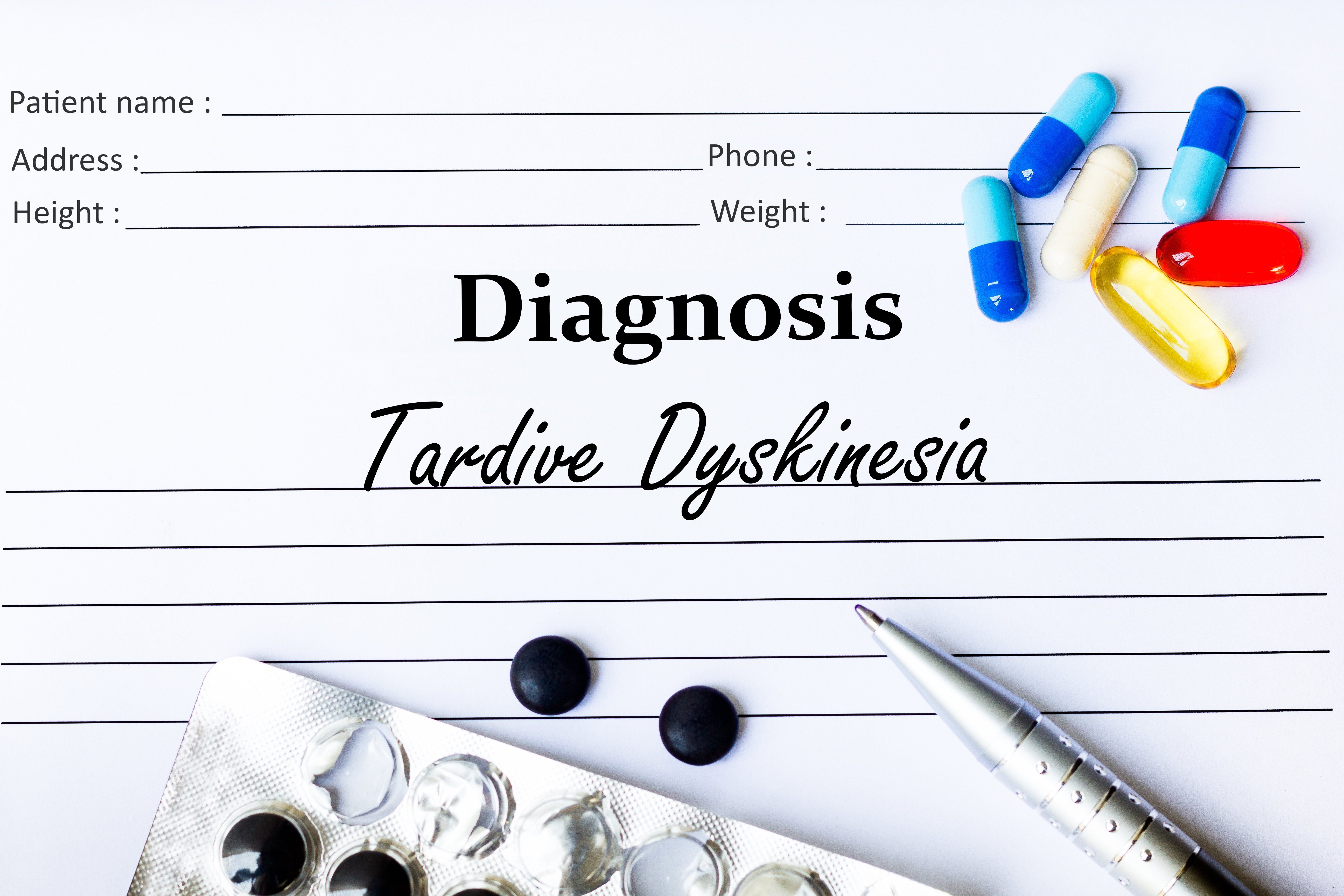Extrapyramidal
What are extrapyramidal side effects in people with schizophrenia?
Extrapyramidal side effects include dyskinesias; repetitive, involuntary, and purposeless body or facial movements. Parkinsonism may occur, involving cogwheel muscle rigidity, pill-rolling tremor and reduced or slowed movements. Akathisia involves motor restlessness, especially in the legs, and dystonias are muscle contractions causing unusual twisting of parts of the body, most often in the neck. These side effects are caused by the dopamine receptor antagonist action of antipsychotics, but can also be found in people with schizophrenia who have never taken antipsychotics and in their relatives.
What is the evidence for extrapyramidal side effects?
Overall prevalence rate
Moderate quality evidence finds the overall prevalence of extrapyramidal symptoms in people taking antipsychotics is around 37%. Parkinsonism prevalence is 20%, akathisia prevalence is 11%, and tardive dyskinesia prevalence is 7-25%. The rates of tardive dyskinesia is highest with first generation antipsychotic use and with longer duration of illness. Rates were lowest in Asian countries.
All antipsychotics versus placebo
Moderate quality evidence shows a small effect of fewer extrapyramidal side effects with clozapine than with placebo. Small effects of increased extrapyramidal side effects were reported with ziprasidone, paliperidone, and risperidone, and medium-sized effects were reported with lurasidone, chlorpromazine, zotepine, and haloperidol. No differences in extrapyramidal side effects were reported for sertindole, olanzapine, quetiapine, aripiprazole, iloperidone, amisulpride and asenapine when compared to placebo.
First versus second generation antipsychotics
Moderate to high quality evidence suggests fewer extrapyramidal side effects with second generation antipsychotics, in particular olanzapine and risperidone, when compared to first generation antipsychotic haloperidol. Fewer extrapyramidal side effects were reported with second generation antipsychotic clozapine when compared to first generation antipsychotic chlorpromazine. Moderate quality evidence suggests clozapine, olanzapine, and risperidone produce fewer extrapyramidal side effects than low-potency first generation antipsychotics.
Second generation antipsychotics
Moderate to high quality evidence suggests risperidone may be associated with more use of antiparkinson medication than clozapine (medium-sized effect), olanzapine, quetiapine, and ziprasidone (small effects). Ziprasidone may be associated with more use of antiparkinson medication than olanzapine (small effect) and quetiapine (medium-sized effect). Olanzapine may be associated with more use of antiparkinson medication than quetiapine (medium-sized effect), and aripiprazole may be associated with more use of antiparkinson medication than olanzapine (small effect). No differences were found between amisulpride and olanzapine, risperidone, or ziprasidone. No differences were found between aripiprazole and risperidone, or between clozapine and olanzapine or ziprasidone. Low quality evidence is unable to determine if there are differences between zotepine and clozapine.
Schizophrenia versus affective disorders
Moderate quality evidence suggests people with affective disorders treated with aripiprazole may show more akathisia than people with schizophrenia treated with aripiprazole. People with schizophrenia treated with olanzapine may show more parkinsonism than people with bipolar disorder treated with olanzapine.
Ethnic differences
Moderate to low quality evidence suggests people from China, Japan and Korea who are treated with antipsychotics may show a small increase in extrapyramidal side effects compared to people from other countries treated with antipsychotics. No differences were reported between Black and White populations.
Please also see the treatment topic for movement disorders.
February 2022
Image: ©shidlovski – stock.adobe.com
Fact Sheet Technical Commentary
Green - Topic summary is available.
Orange - Topic summary is being compiled.
Red - Topic summary has no current systematic review available.
